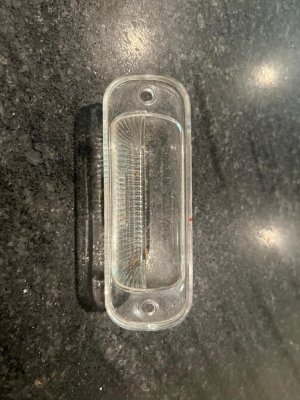I have been trying to locate a replacement engine bay lamp for my E24. This appears to be the same as the one used in the E9. Seems to be NLA...
Since I had one in semi-serviceable condition, I decided to try making a copy. I did a little filling and repair on my original (it was by no means pristine!), and made a silicone mold. Here is the mold process. I'll let you know how it comes out after I try casting the new one in clear epoxy...


Cheers,
Scott
Since I had one in semi-serviceable condition, I decided to try making a copy. I did a little filling and repair on my original (it was by no means pristine!), and made a silicone mold. Here is the mold process. I'll let you know how it comes out after I try casting the new one in clear epoxy...
Cheers,
Scott
Last edited:



